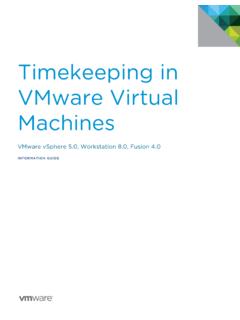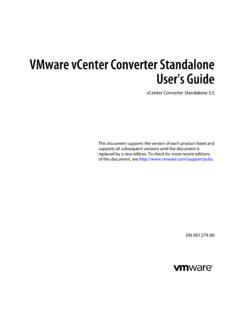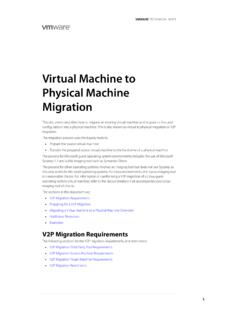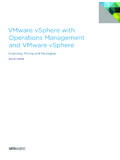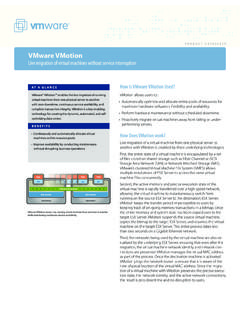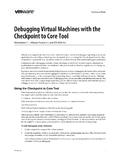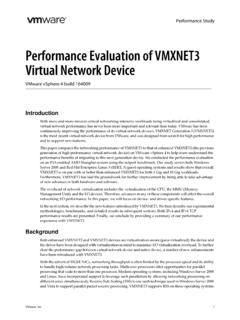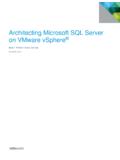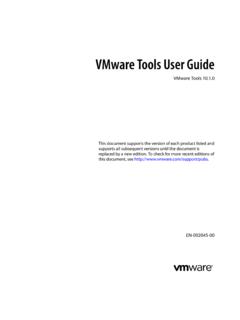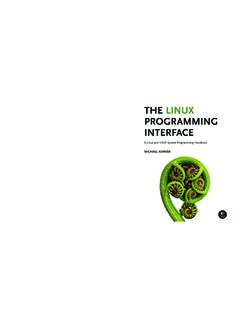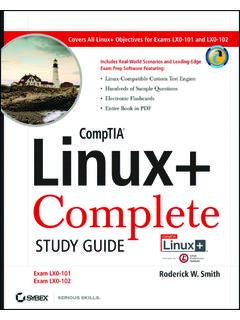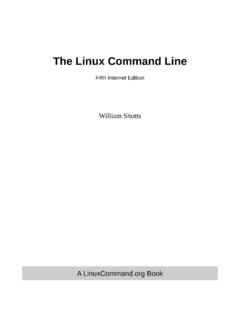Transcription of VMware Understanding Full Virtualization ...
1 VMware Understanding full Virtualization , paravirtualization , and hardware assist Contents i Contents Overview of x86 CPU The Challenges of x86 hardware Technique 1 - full Virtualization using Binary Technique 2 - OS Assisted Virtualization or Technique 3 - hardware Assisted Memory Device and I/O Summarizing the Current State of x86 Virtualization full Virtualization with Binary Translation is the Most Established Technology hardware assist is the Future of Virtualization .
2 But the Real Gains Have Yet to Xen s CPU paravirtualization Delivers Performance Benefits with Maintenance VMware s Transparent paravirtualization Balances Performance Benefits with Maintenance VMware is Fostering an Open Standards Approach to VMware Leverages a Multi-Mode VMM Architecture for Performance and Next VMware Understanding full Virtualization , paravirtualization , and hardware assist Introduction 1 Figure 1 Summary timel ine of x86 virtual ization tec hnologies Introduction In 1998, VMware figured out ho w to virtualize the x86 platform, once thought to be impossible, and cre ated the market for x86 Virtualization .
3 The solution was a combination of binary translation and direct execution on the processor that allowed multiple guest OSes to run in full isolation on the same computer with readily affordable Virtualization overhe ad. The savings that tens of thousands of companies have generated from the deployment of this technology is further driving the rapid adoptio n of virtualized computing from the desktop to the data center. As new ve ndors enter the space and attempt to differentiate their products, many are creating confusion with their marketing claims and terminology. For example, while hardware assist is a valuable technique that will mature and expand the envelope of workloads that can be virtualized, paravirtualization is not an entirely new technology that offers an order of magnitude greater performance.
4 While this is a complex and rapidly evolving space, the technologies employed can be readily explained to help companies understand their options and choose a path forward. This white paper attempts to clarify the various techniques used to virtualize x86 hardware , the strengths and weaknesses of each, and VM ware s community approach to develop and employ the most effective of the emerging virtualizatio n techniques. Figure 1 provides a summary timeline of x86 virtualizatio n technologies from VMware s binary translation to the recent application of kernel paravirtualization and hardware -assisted virtu alization.
5 VMware Understanding full Virtualization , paravirtualization , and hardware assist Overview of x86 Virtualization 2 Figure 2 x86 virtual iz ation l ayer Figure 3 The hyp ervisor manages virtual mac hine monitors that host virtual mac hines Overview of x86 Virtualization The term Virtualization bro adly describes the separation of a service request from the underlying physical delivery of that service. With x86 computer virtualizatio n, a Virtualization layer is added between the hardware and operating system as seen in Figure 2.
6 This Virtualization layer allows multiple operating system instances to run concurrently within virtual machines on a single computer, dynamically partitioning and sharing the available physical resources such as CPU, storage, memory and I/ O devices. As desktop and server processing capacity has consistently increased year after year, virtualizatio n has prove d to be a powerful technology to simplify software development and testing, to enable server consolidation, and to enhance data center agility and business continuit y. As it turns out, fully abstracting the operating system and applicat ions from the hardware and encapsulating them into portable virtual machines has enabled virtual infrastructure features simply not possible with hardware alone.
7 For example, servers can now run in extremely fault tolerant configurations on virtual infrastructure 24x7x365 with no downt ime needed for backups or hardware maintenance. VM ware has customers with pro duction servers that have been running without downtime for over three years. For industry standard x86 systems, Virtualization ap proaches use either a hosted or a hypervisor architecture. A hosted architecture installs and runs the Virtualization layer as an application on top of an operating system and supports the broadest range of hardware configurations. In contrast, a hypervisor (bare-metal) architecture installs the Virtualization layer directly on a clean x86-based system.
8 Since it has direct access to the hardware resources rather than going through an operating system, a hypervisor is more efficient than a hosted architecture and delivers greater scalability, robustness and performance. VMware Player, ACE, Workstation and Server employ a hosted architecture for flexibility, while ESX Server employs a hypervisor architecture on certified hardware for data center class performance. To better understand the techniques employed for x86 virtualizatio n, a brief background on the component parts is useful. The Virtualization layer is the software responsible for hosting and managing all virtual machines on virtual machine monitors (VMMs).
9 As depicted in Figure 3 Figure 3, the Virtualization layer is a hypervisor running directly on VMware Understanding full Virtualization , paravirtualization , and hardware assist CPU Virtualization 3 Figure 4 x86 p rivil ege l evel arc hitec ture without virtual ization the hardware . The functionality of the hypervisor varies greatly based on architecture and implementation. Each VMM running on the hypervisor implements the virtual machine hardware abstraction and is responsible for running a guest OS.
10 Each VMM has to partition and share the CPU, memory and I/O devices to successfully virtualize the system. CPU Virtualization The Challenges of x86 hardware Virtualization X86 operating systems are designed to run directly on the bare-metal hardware , so they naturally assume they fully own the computer hardware . As shown in Figure 4, the x86 architecture offers four levels of privilege known as Ring 0, 1, 2 and 3 to operating systems and applications to manage access to the computer hardware . While user level applications typically run in Ring 3, the operating system needs to have direct access to the memory and hardware and must execute its privileged instructions in Ring 0.
